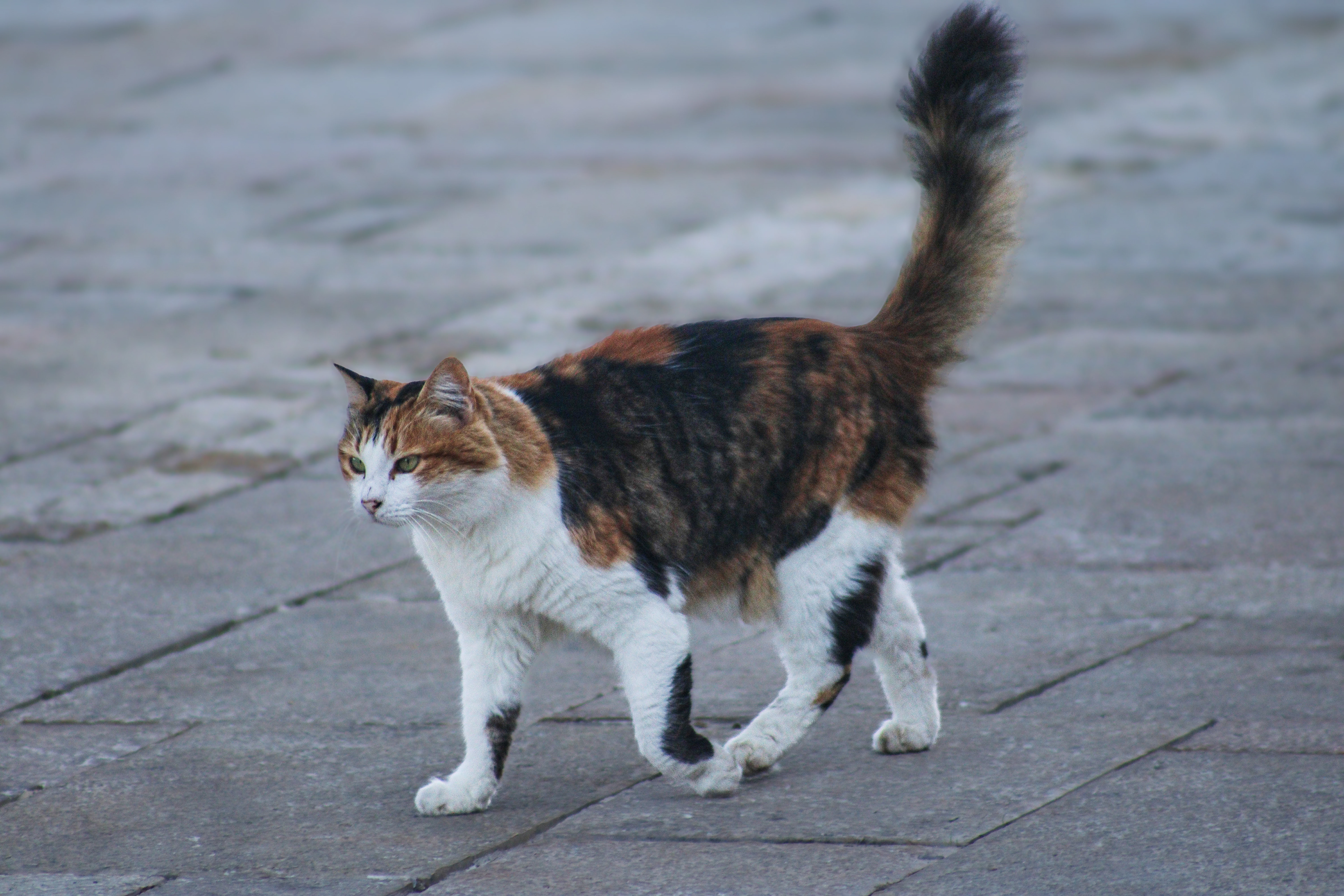The Art of Cat Photography
Cats have long been a favorite subject for photographers, not only because of their inherent charm but also due to their dynamic personalities and unique physical features. Photographing cats, however, requires patience, creativity, and a deep appreciation for their subtle nuances. Whether they’re lounging in a patch of sunlight, stalking through a garden, or, as in this case, striding confidently across a stone pavement, cats offer endless opportunities to capture moments of quiet beauty.

One of the keys to great cat photography is understanding your subject’s temperament. Cats are naturally curious, but they are also easily distracted or startled. Approach them gently and observe their behavior before starting to shoot. Sometimes, the best photos come when you simply let the cat move naturally within its environment. The image of the calico cat above is a perfect example of this. Its composed gait, the texture of its fur, and the setting all create a harmonious composition that feels authentic and unposed.
Lighting is critical when photographing cats. Natural light works best, as it enhances the richness of their fur and the clarity of their eyes. Early morning or late afternoon light, often referred to as the “golden hour,” provides a soft, warm glow that flatters most subjects, including felines. For this shot, the diffused ambient light highlights the orange, black, and white patches of the calico’s fur while casting soft shadows on the textured stone background. This interplay between light and shadow adds depth and brings the photo to life.
Composition is another essential factor. Cats move quickly, so framing your shot ahead of time is crucial. Look for lines, textures, and patterns in the environment that complement your subject. In this case, the wide expanse of stone pavement serves as a neutral backdrop, allowing the vibrant colors of the cat’s coat to pop. The simplicity of the setting shifts all attention to the feline’s elegance and poise. Use a lower angle to meet the cat at eye level—this perspective creates a more intimate and engaging image, as it connects the viewer with the subject.
Finally, consider the story you want your photograph to tell. Cats are expressive creatures, and their eyes, posture, and movement can convey a wide range of emotions, from curiosity to independence. In this particular shot, the calico’s focused gaze and deliberate stride suggest confidence and purpose, as if it owns the path beneath its paws. The worn stone slabs add a sense of timelessness, grounding the moment in an evocative, almost cinematic narrative.
For anyone looking to explore cat photography, remember that the best shots often come from blending preparation with spontaneity. Have your camera ready, but don’t rush the process. Let the cat guide you—it will reveal its personality in its own time. Whether you’re shooting a beloved pet, a stray in an urban alley, or a feline perched in a picturesque landscape, capturing these moments is as much about understanding the animal as it is about mastering the technical aspects of photography. In the end, each photo is a testament to the grace, mystery, and charm that make cats such irresistible muses.